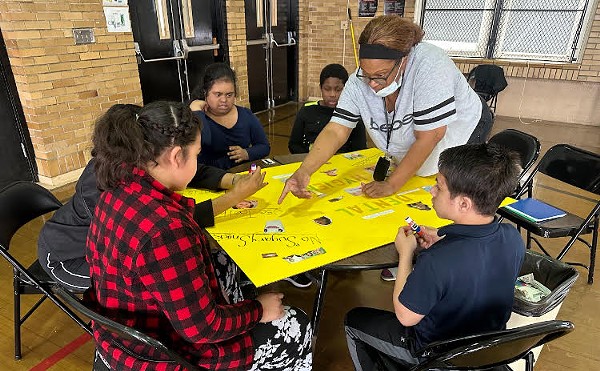Unlike, say, the Nobel Prize for Literature, which recognizes a writer’s entire career, the Grawemeyer Award for Music Composition (accompanied by a prize of $100,000) is judged and awarded to a specific composition. In the case of Dutch composer Joël Bons, whose “Nomaden” won this year’s Grawemeyer, one could say that’s a distinction without a difference. “Nomaden” is, in essence, a sublime, grand masterpiece that stands as the culmination of a lifetime of musical exploration.
Though The Netherlands is a smallish country, with a population of around 17 million, it was the first of the great European trading empires, and has been an international cultural crossroads for 500 years. In a phone interview last winter, just after the announcement of his Grawemeyer, Bons said of growing up in The Netherlands in the 1960s that it may have been the most exciting and stimulating time in all of musical history.
He lived in a sonic landscape filled with the sounds of great European art music and the emerging sounds of rock. And, because of his parents’ extraordinary record collection, he also plunged into musical sounds and ideas from around the globe, including mariachi, ragas and African polyrhythms.
Bons began his musical journey as a guitarist, immersed in the sounds of Jimi Hendrix, The Beatles, Frank Zappa and others. He studied composition with teachers across Europe. And his musical travels, interests and collaborations began to grow richer and richer. In 2002, Bons founded The Atlas Ensemble, a unique, award-winning, intercultural ensemble that performed and recorded “Nomaden” under the direction of Conductor Ed Spanjaard (the work is available on Spotify and Naxos Music Library, and the BIS recording was released for sale two weeks ago).
This work, which was commissioned by Cello Biennale Amsterdam, may be the most “bespoke” musical composition ever devised. It’s not unusual for a Western art composer to work closely with, say, a violinist, to explores technical possibilities in the course of producing a new piece.
But in this case, Bons collaborated with brilliant practitioners of music from an array of musical styles. The players and instruments come from China, Japan, India, Iran, Azerbaijan, Armenia, Turkey and Europe.
Some of the musicians don’t read Western notation — or are improvisers who don’t use notation at all. Others are steeped in notated music, but are not improvisers. Many use tonal schemes and structures that are completely alien to Western notions of how music function. For Bons, the challenge was to create a multicultural piece revealed that rich palette of sounds rather than assimilating, obscuring and suppressing their original vitality.
To accomplish that, he built a journey around a central figure, cellist Jean-Guihen Queyras, whose flexible sound and sensibility guides listeners on an exhilarating and inspiring aural journey like nothing you’ve ever heard. I gather that in live performance the cello sits front and center and the other instruments move about and join him across the series of interactions.
There are 38 movements in this piece, and they are wildly varied — yet every step of the way is clear, coherent and joyful. Structurally, the piece has three component types of music. There are 18 pieces of “Nomad” music, all of which are variations on a theme. There are 11 numbered “Passages” that serve to highlight the idiosyncratic sounds of the various instruments (so, for instance, a “passage” might specifically highlight the sound of winds, plucked or bowed strings).
The rest of the sections offer a joyful variety of sounds. For instance, a movement called “Erhungi” is a trio that begins with the cello carving out fast-paced Bartokian figures in counterpoint with two Chinese instruments, an erhu (a two-stringed Chinese fiddle) and a sheng (a Chinese mouth organ).
Later, a movement called “Duel” turns into a whimsical musical battle between the cello and the sheng.
A movement called “Azertet” brings the cello together with two instruments from Azerbaijan (a lute and a spike fiddle) for round of high-spirited sounds that start out with composed segments and culminate in a delightful improvisation.
A segment named “13/8” — after its time signature — unites cello, Indian setar and steel drum in a rhythmic tour-de-force. And if you’re listening for maximum intercultural expression, there’s a movement called “Salsa” that offers all the danceability you might expect – but is performed on instruments like lutes, an Armenian double reed wind instrument called the duduk, and a Persian bowed instrument.
In fact, folks who are fascinated by the sounds of instruments from other parts of the world, could probably use this as a sort of intercultural guide to the sounds and idioms of the various bowed and plucked strings, percussion instruments, and wind instruments that are employed.
Joël Bons will speak about Nomaden on Thursday April 11, 3 p.m. at the Bird Recital Hall at the University School of Music. The event is free and open to the public.






